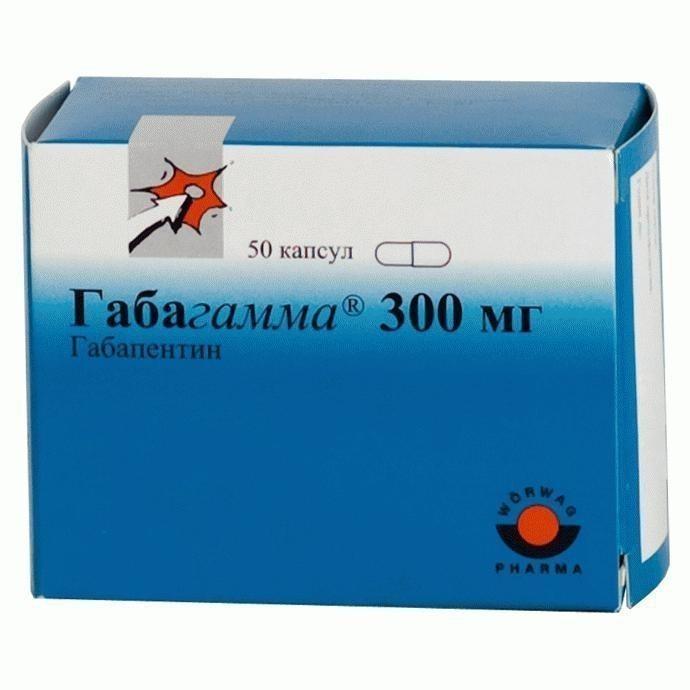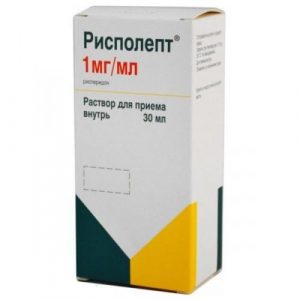Description
Release form
Hard gelatin capsules, No. 1, yellow capsule contents – white powder.
Packing
10 pcs. – blisters (5) – packs of cardboard.
Pharmacological action
antiepileptic drug. Gabapentin is similar in structure to the neurotransmitter gamma-aminobutyric acid (GABA), but its mechanism of action is different from other drugs that interact with GABA receptors (valproate, barbiturates, benzodiazepines, GABA transaminase inhibitors, GABA uptake inhibitors, and GABA agonists ) It does not have GABAergic properties and does not affect the uptake and metabolism of GABA. Preliminary studies have shown that gabapentin binds to the 2 – subunit of voltage-dependent calcium channels and reduces the flow of calcium ions, which plays an important role in the occurrence of neuropathic pain.
Other mechanisms of action of gabapentin for neuropathic pain are a decrease in glutamate-dependent death of neurons, an increase in GABA synthesis, and suppression of the release of neurotransmitters of the monoamine group.
Gabapentin at clinically significant concentrations does not bind to receptors of other common drugs or neurotransmitters, including GABAA, GABAA, benzodiazepine, glutamate, glycine or N-methyl-D-aspartate receptors. Unlike phenytoin and carbamazepine, gabapentin does not interact with sodium channels in vitro. Gabapentin partially attenuated the effects of the glutamate receptor agonist N-methyl-D-asparagus in some in vitro tests, but only at a concentration of more than 100 μmol, which was not achieved in vivo. Gabapentin slightly reduces the in vitro release of monoamine neurotransmitters.
Pharmacokinetics
Absorption and distribution
The bioavailability of gabapentin is not proportional to the dose. So, with an increase in dose, it decreases. After ingestion of Cmax gabapentin in plasma is achieved after 2-3 hours. The absolute bioavailability of gabapentin in capsules is about 60%. Food, including high in fat, does not affect pharmacokinetics.
Plasma Gabapentin excretion is best described using a linear model. T1 / 2 from plasma is dose-independent and averages 5 7 hours.
Pharmacokinetics do not change with repeated use equilibrium plasma concentrations can be predicted based on the results of a single dose.
Gabapentin practically does not bind to plasma proteins (d – 57.7 l.
Metabolism and excretion
Excreted exclusively by the kidneys unchanged, is not metabolized. The drug does not induce oxidative liver enzymes with a mixed function involved in drug metabolism.
Pharmacokinetics in special clinical cases
Plasma gabapentin clearance is reduced in the elderly and patients with impaired renal function. Excretion rate constant, plasma clearance, and renal clearance are directly proportional to creatinine clearance. Gabapentin is removed from plasma by hemodialysis. In patients with impaired renal function and patients receiving hemodialysis treatment, dose adjustment is recommended.
Indications
adults and children from 12 years of age: in the complex treatment of partial seizures with or without secondary generalization of
in adults: pain with diabetic neuropathy, postherpetic neuralgia.
Contraindications
acute pancreatitis
hereditary galactase deficiency
lactase deficiency
glucose-galactose malabsorption syndrome
hypersensitivity to any component of the drug.
Precautions: renal failure, psychotic illness.
Use during pregnancy and lactation
The risk associated with epilepsy and antiepileptic drugs in general
Mothers receiving antiepileptic drugs have a 2 3 times higher risk of having children with birth defects. The most frequently reported cases are the birth of children with cleft lip, malformations of the cardiovascular system and neural tube defects. Combined therapy with several antiepileptic drugs increases the risk of congenital malformations to a greater extent than monotherapy. Therefore, when possible, monotherapy is preferred. Women of childbearing age, in need of anticonvulsant
therapy, it is necessary to consult a specialist. The need for continued anticonvulsant treatment should be reviewed if pregnancy is planned. Do not abruptly cancel
antiepileptic drugs, as this can lead to the resumption of convulsive seizures, which can have serious consequences for the health of the mother and child. Development delay in children born to women with epilepsy is rare. It is not possible to differentiate what causes the developmental delay: genetic, social factors, maternal epilepsy, or the use of antiepileptic drugs.
Risk associated with the use of gabapentin
There are no data on the use of gabapentin in pregnant women.
Reproductive toxicity has been shown in animal studies. The potential risk to humans is not known. Gabapentin should not be used during pregnancy unless the potential benefit to the mother outweighs the potential risk to the fetus.
Certain conclusions regarding whether there is an increased risk of congenital malformations if gabapentin was used during pregnancy cannot be made because in every report on the use of gabapentin in pregnancy, there was epilepsy as such and concomitant therapy with antiepileptic drugs.
Gabapentin is distributed into mother s milk. Since the effect of gabapentin on children with breastfeeding is not known, caution should be exercised when prescribing gabapentin to a nursing mother. Gabapentin should be used in nursing mothers only if the potential benefit to the mother outweighs the potential risk to the fetus.
Special instructions
Suicide, suicidal thoughts or worsening of the clinical picture
Suicidal thoughts and behavior have been reported in patients receiving antiepileptic drugs for several reasons. A meta-analysis of randomized, placebo-controlled trials of antiepileptic drugs also showed a slight increase in the risk of suicidal thoughts and behavior. The mechanism of this risk is not known, and the available data do not exclude the possibility of increasing the risk with gabapentin.
Careful monitoring of patients is necessary to identify suicidal thoughts and behavior. When these signs appear, appropriate treatment should be prescribed. Patients and caregivers should be advised to consult a doctor if signs of suicidal thoughts or behavior appear.
Drug-induced rash with eosinophilia and systemic manifestations (DRESS syndrome)
Severe, life-threatening drugs have been reported in patients taking antiepileptic drugs, including gabapentin, systemic hypersensitivity reactions, such as a drug rash with eosinophilia and systemic symptoms (DRESS syndrome).
It should be noted that early manifestations of hypersensitivity may appear, such as fever or swollen lymph nodes (lymphadenopathy), even if there is no rash. If such signs or symptoms appear, it is necessary to examine the patient immediately. Gabapentin should be discontinued if an alternative cause for these symptoms cannot be established.
If a patient undergoing gabapentin treatment develops acute pancreatitis, gabapentin treatment should be discontinued.
Although withdrawal syndrome was not observed with gabapentin treatment, it is not recommended to abruptly discontinue treatment. Withdrawal of any anticonvulsants in patients with epilepsy can provoke status epilepticus.
In the treatment of gabapentiomas, like other anticonvulsants, some patients may experience an increase in seizures or new types of seizures. Monotherapy with gabapentin in the treatment of patients resistant to anticonvulsant
therapy is not successful, as with other antiepileptic drugs.
Gabapentin is not effective in primary generalized seizures, such as abscess, and may exacerbate these seizures in some patients. Gabapentin should be used with caution in patients with mixed convulsive seizures, including with abscess epilepsy.
Patients 65 years of age and older
Systematic studies with gabapentin have not been conducted in patients 65 years of age or older. In a double-blind study, it was shown that patients with neuropathic pain aged 65 years and older at a slightly higher percentage than younger individuals had drowsiness, peripheral edema, and asthenia. Along with these observations, clinical studies in this age group do not indicate that the profile of adverse events is different from that observed in younger patients.
Children 12 years of age and older
The effect on the education, intelligence, and development of children and adolescents with long-term (over 36 weeks) therapy with gabapentin has not been studied enough. Therefore, the benefits of long-term therapy should be evaluated taking into account the potential risk of such treatment.
Laboratory readings of
With a semi-quantitative determination of total protein in the urine using test strips, false-positive results can be obtained. In this case, it is recommended to confirm a positive result by other analytical methods, for example, the Buret method, turbidimetric or dye binding method, or use alternative methods from the very beginning.
Gabagamma ® contains lactose. In patients with hereditary galactose intolerance, lactase deficiency or glucose-galactose malabsorption, the drug is contraindicated.
Influence on the ability to drive vehicles and mechanisms
Gabapentin may have a slight or moderate effect on the ability to drive and operate machinery. The drug acts on the central nervous system and can cause drowsiness, dizziness and other symptoms. If these adverse events are even mild, they can be potentially dangerous when driving or operating machinery. Symptoms may appear more often at the beginning of treatment and with increasing doses.
Composition
1 caps.
gabapentin 300 mg
Excipients: lactose, corn starch, talc, gelatin, titanium dioxide, iron oxide yellow, iron oxide red.
Side effects
The frequency of adverse reactions observed during clinical trials in patients with epilepsy (in combination therapy and with gabapentin monotherapy), and in patients with neuropathic pain, It is distributed in the following order: very often (more than 10% of cases), often (1% -10% of cases), infrequently (0.1% -1% of cases), rarely (0.01% -0.1% of cases), very rarely (less than 0.01% cases, including reports of single side effects). Where a different frequency of side effects was noted, the highest frequency is indicated. The frequency of adverse reactions noted in post-marketing observations cannot be estimated based on available data. In the data below, their frequency is indicated as unknown. In each group, unwanted effects are presented in decreasing order of severity.
Infections and parasitic diseases: very often – viral diseases often – pneumonia, respiratory diseases, urinary tract infections, infectious diseases, otitis media.
From the hematopoietic system: often – leukopenia is unknown – thrombocytopenia.
From the side of the immune system: rarely – allergic reactions (including urticaria rash) unknown – drug rash with eosinophilia and systemic symptoms (DRESS syndrome).
From the side of metabolism and nutrition: often – anorexia, increased appetite.
From the psyche: often – hostility, confusion and emotional lability, depression, anxiety, increased nervous irritability, impaired thinking is unknown – hallucinations.
From the nervous system: very often – drowsiness, dizziness, ataxia often – cramps, hyperkinesis, dysarthria, amnesia, tremors, impaired sensations, such as paresthesia, decreased sensitivity, impaired coordination of movements, nystagmus, increased, a decrease or absence of reflexes is rare – hypokinesia is unknown – other disorders of motor functions (including dyskinesia, dystonia).
From the side of the organ of vision: often – visual impairment, such as decreased visual acuity, double vision.
On the part of the organ of hearing and labyrinth disorders: often – dizziness is unknown – ringing in the ears.
From the cardiovascular system: often – arterial hypertension, rarely vasodilation – palpitations.
From the respiratory system: often – dyspnea, bronchitis, pharyngitis, cough, rhinitis.
From the digestive system: often – vomiting, nausea, dental abnormalities, gingivitis, diarrhea, abdominal pain, dipepsy, constipation, dry mouth and throat, flatulence unknown – pancreatitis, hepatitis, jaundice.
From the skin and subcutaneous tissues: often – swelling of the face, hemorrhagic rash most often described as bruising as a result of physical trauma, rash, itching, acne unknown – Stevens-Johnson syndrome, angioedema, erythema multiforme, alopecia.
From the musculoskeletal system and connective tissue: often – joint pain, muscle pain, back pain, convulsive twitching unknown – myoclonus.
From the kidneys and urinary tract: unknown – acute renal failure, urinary incontinence.
From the genitals and mammary gland: often – impotence is unknown – chest hypertrophy, gynecomastia.
General disorders and disorders at the injection site: very often – fatigue, fever often – peripheral edema, gait disorders, asthenia, pain, malaise, flu-like syndrome rarely – generalized edema is unknown – withdrawal syndrome (mainly anxiety, insomnia, nausea, pain, sweating), chest pain. Cases of sudden unexpected death have been reported when a causal relationship with gabapetpine treatment has not been established.
From laboratory and instrumental studies: often – leukopenia, weight gain rarely – increased levels of liver enzymes (ACT, ALT) and bilirubin unknown – fluctuations in blood glucose in patients with diabetes.
Injury Intoxic rarely, weight gain increased levels of liver enzymes (ACT, ALT) and bilirubin are unknown fluctuations in blood glucose levels in patients with diabetes.
Injury Intoxic rarely, weight gain increased levels of liver enzymes (ACT, ALT) and bilirubin are unknown fluctuations in blood glucose levels in patients with diabetes.
Injury Intoxicrelations and complications of manipulations: often – accidental injury, fracture, abrasions.
In the treatment of gabapentin, there are reports of cases of acute pancreatitis. A causal relationship with gabapentin has not been established.
Cases of myopathy have been reported with increased levels of creatine kinase in patients with end-stage renal failure undergoing hemodialysis.
Infections of the respiratory tract, otitis media, bronchitis, and seizures in children have been reported only in clinical studies. In addition, in clinical trials in children, in most cases, aggressive behavior and hyperkinesis were noted.
Drug Interactions
A study in healthy volunteers (n = 12) showed that co-administration of morphine in controlled-release capsules of 20 mg / caps. 2 hours before taking gabapentin, there was an increase in the average AUC of gabapentin by 44% compared with this indicator without taking morphine. Patients taking morphine and gabapentin together should be closely monitored due to the risk of developing symptoms of central nervous system depression (drowsiness). When these symptoms appear, the dose of gabapentin or morphine should be reduced.
No interaction was observed between gabapentin and phenobarbital, phenytoin, valproic acid, or carbamazepine. The equilibrium state of the pharmacokinetics of gabapentin is the same for healthy individuals and patients with epilepsy receiving other anticonvulsants.
The simultaneous use of gabapentin and oral contraceptives containing norethindrone and / or ethinyl estradiol does not affect the pharmacokinetics of any component.
With the simultaneous use of gabapentin with antacids containing aluminum and magnesium, the bioavailability of gabapentin is reduced by 24%. It is recommended to take gabapentin approximately 2 hours after taking antacid drugs.
When taking probenecid, the renal excretion of gabapentin does not change.
When co-administered with cimetidine, there is a slight decrease in renal excretion of gabapentin, which is not clinically significant.
Overdose
Symptoms: dizziness, diplopia, speech impairment, drowsiness, lethargy, diarrhea and increased severity of other side effects.
Treatment: gastric lavage, activated carbon intake, symptomatic therapy. Hemodialysis may be indicated in patients with severe renal insufficiency.
Storage Conditions
The product should be stored out of the reach of children at a temperature not exceeding 25 ° C.
Shelf life
3 years.
Active ingredient
Gabapentin
capsule dosage form
Possible product names
GABAGAM 0.3 N50 CAPS srdlmgab. X50
Gabagamma caps 300mg x 50
GABAGAMMA CAPS. 300MG No. 50
Gabagamma capsules 300 mg, 50 pcs.
Artes Pharma, Germany




